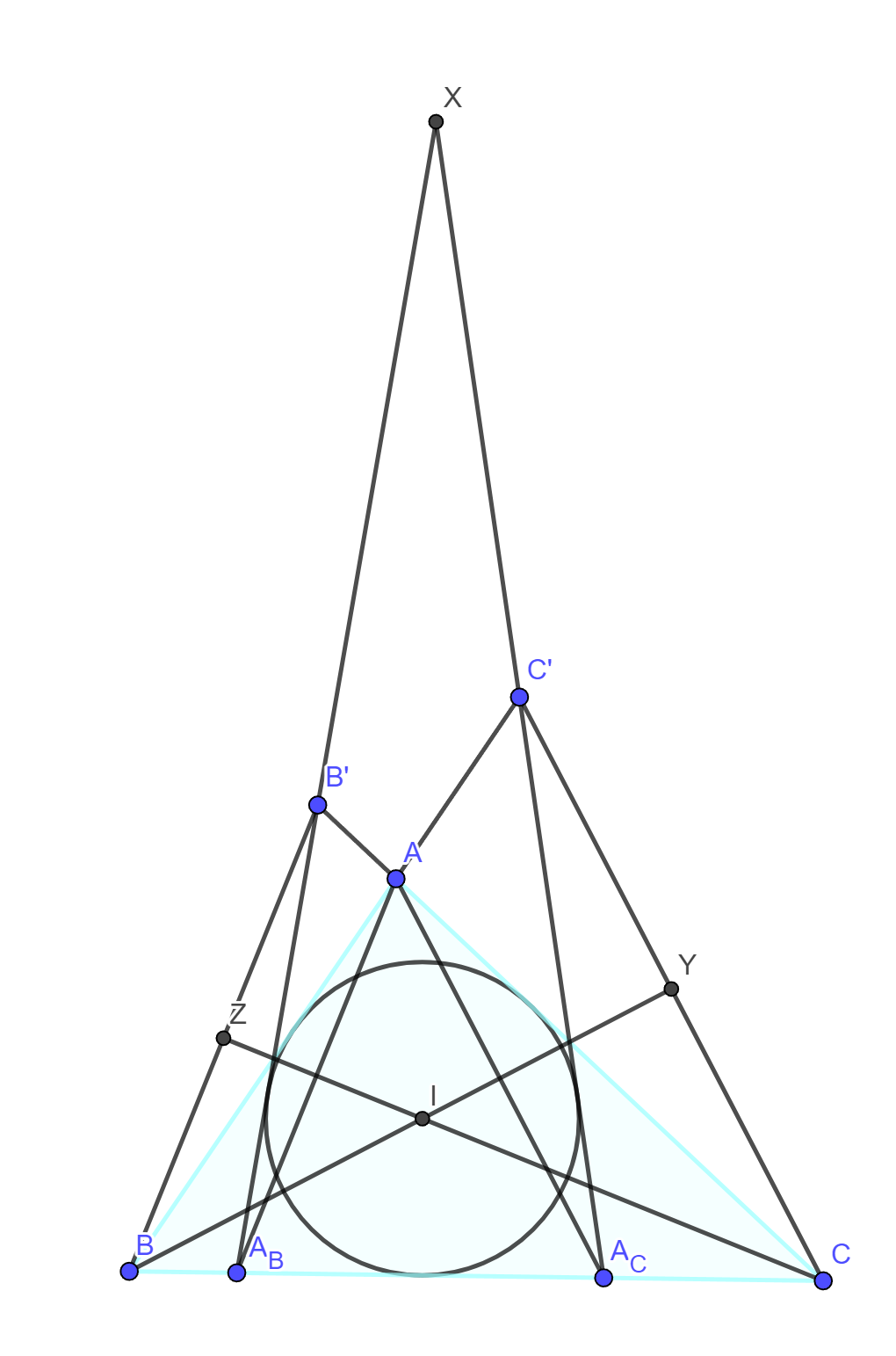Y by Rounak_iitr
Let  be a triangle with incenter
be a triangle with incenter  . Suppose the reflection of
. Suppose the reflection of  across
across  and the reflection of
and the reflection of  across
across  intersect at a point
intersect at a point  . Prove that
. Prove that  is perpendicular to
is perpendicular to  .
.

Stay ahead of learning milestones! Enroll in a class over the summer!
![\[\sum_{i<j} x_{i}x_{j} \left(x^{2}_{i}+x^{2}_{j} \right) \leq C
\left(\sum_{i}x_{i} \right)^4\]](http://latex.artofproblemsolving.com/d/d/e/dde2d1dd0c412d8ba640f1d4c044e2fa2dcccc82.png)
 and looks at the highest power of
and looks at the highest power of 
 By symmetry, it follows that
By symmetry, it follows that ![\begin{align*}
\begin{vmatrix} 0 & s-c & s-b \\ a & b & c \\ a^2(a-b-c) & b(a^2+bc-c^2-ab) & c(a^2+bc-b^2-ca) \end{vmatrix} &= -(s-c)[ac(a^2+bc - b^2-ca) - a^2c(a-b-c)] + (s-b)[ab(a^2+bc-c^2-ab) - a^2b(a-b-c)] \\ &= -(s-c)(ac)(a^2+bc-b^2-ca-a^2+ab+ac) + (s-b)(ab)(a^2+bc-c^2-ab-a^2+ab+ac) \\ &= -(s-c)(ac)(-b^2+ab+bc) + (s-b)(ab)(bc-c^2+ac) \\ &= -(s-c)(abc)(a+c-b) + (s-b)(abc)(a+b-c) \\ &= -(s-c)(abc)(2(s-b)) + (s-b)(abc)(2(s-c)) \\ &= 0,
\end{align*}](http://latex.artofproblemsolving.com/b/5/d/b5dc984119d4d5342de4d4f87405a67c00dedcaf.png) so
so 
 .
. with
with  .
.Something appears to not have loaded correctly.